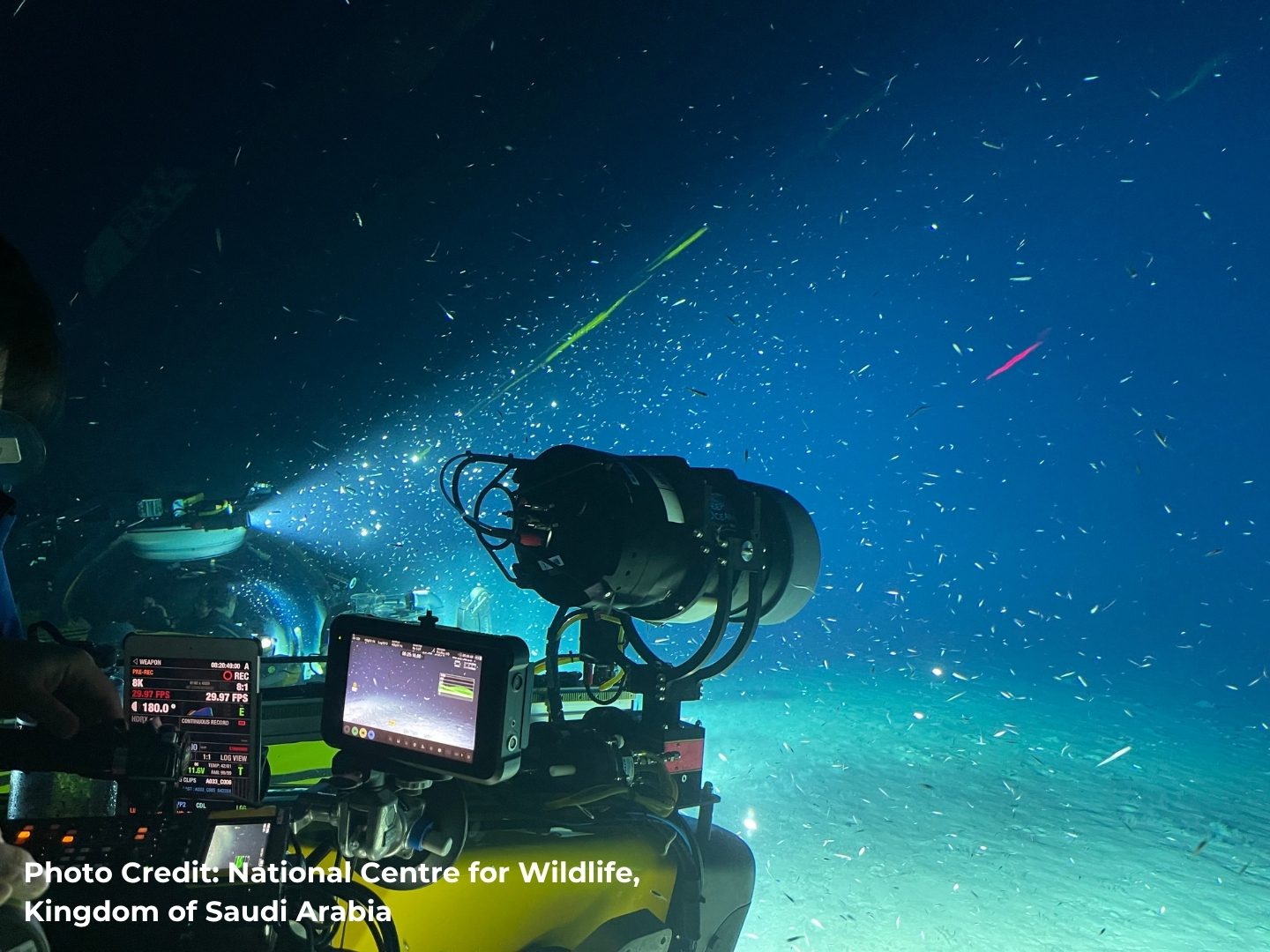Contributed by Ms. Taiba Alamoudi, King Abdullah University of Science and Technology, Domain Specialist - MENA Oceans Network
In a remarkable discovery, a scientific expedition has uncovered unique ecosystems thriving in deep, warm, and nearly oxygen-free depressions in the Red Sea.
The research, published in PNAS Nexus by Dr. Shannon Klein et al., a team from King Abdullah University of Science and Technology (KAUST) and National Center for Wildlife (NCW), reveals how life can persist in extreme conditions once thought uninhabitable.
The landmark discovery was made during the Red Sea Decade Expedition 2022, a major scientific mission by Saudi Arabia’s NCW, in collaboration with KAUST aboard the state-of-the-art R/V OceanXplorer, the team explored two deep depressions in the Difaht Farasan reef system.
A World Without Oxygen
The team found two distinct underwater basins with unique chemistry. One, named Amq Deep, was found to be suboxic, with severely depleted oxygen. The other, Farasan Deep, was near-anoxic, with oxygen levels below the limits of detection and even exhibiting the characteristic odor of hydrogen sulfide, a sign of active microbial life in the complete absence of oxygen. These deep pools are low in oxygen, more acidic, and rich in carbon due to the breakdown of organic matter.
A Surprising Array of Survivors
Despite an environment that should be hostile to most marine animals, deep-sea vehicles revealed a remarkable diversity of life that has uniquely adapted to survive. In the near-anoxic Farasan Deep, the team observed epifauna on the seabed and small aggregations of an unidentified cryptobenthic fish, surviving where oxygen was effectively absent.
The suboxic Amq Deep hosts at least three species of fish, including lightfish, soldierfish, and large aggregations of lanternfish. These lanternfish were seen moving five times slower than normal, a behavioral tactic to conserve precious energy. Dense communities of lace corals were found building their delicate calcium carbonate skeletons in the acidic waters, challenging our understanding of how corals calcify.
This discovery in a premier MENA ocean is more than a scientific curiosity; it is a vital natural laboratory. As oceans worldwide face threats from climate change, these resilient Red Sea organisms hold the secrets to survival. Understanding their unique adaptations can provide a roadmap for protecting the rich marine heritage of the Red Sea and global oceans for generations to come.
Access the full Red Sea ecosystems study in PNAS Nexus
Media contacts for more information:
H.E. Dr. Mohammad Qurban, CEO
National Center for Wildlife, Saudi Arabia
ceooffice@ncw.gov.sa
Dr. Shannon G. Klein, Research Scientist
King Abdullah University of Science and Technology, Saudi Arabia
shannon.klein@kaust.edu.sa
Office: +966 (12) 808 2640

